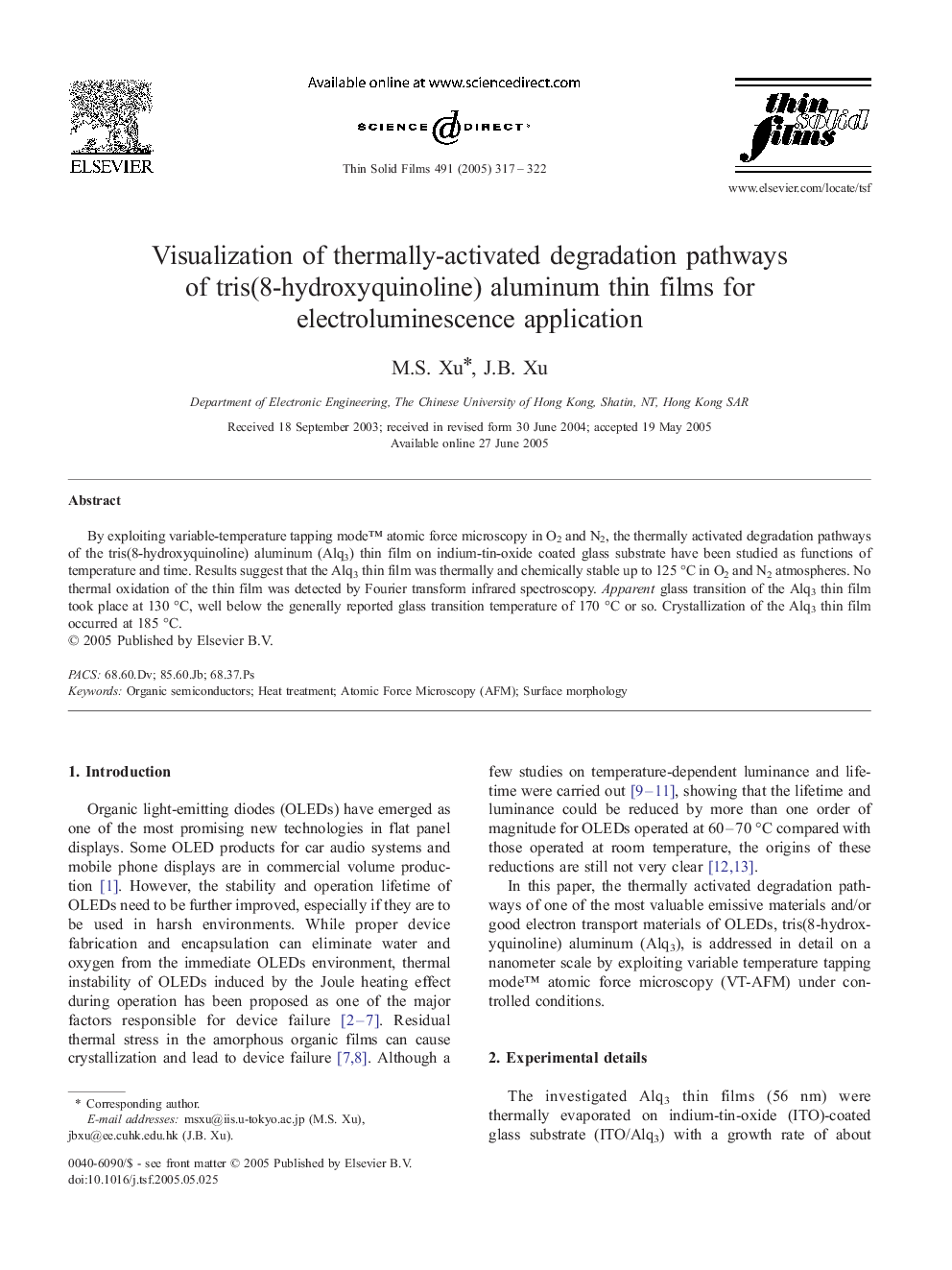| Article ID | Journal | Published Year | Pages | File Type |
|---|---|---|---|---|
| 9812215 | Thin Solid Films | 2005 | 6 Pages |
Abstract
By exploiting variable-temperature tapping mode⢠atomic force microscopy in O2 and N2, the thermally activated degradation pathways of the tris(8-hydroxyquinoline) aluminum (Alq3) thin film on indium-tin-oxide coated glass substrate have been studied as functions of temperature and time. Results suggest that the Alq3 thin film was thermally and chemically stable up to 125 °C in O2 and N2 atmospheres. No thermal oxidation of the thin film was detected by Fourier transform infrared spectroscopy. Apparent glass transition of the Alq3 thin film took place at 130 °C, well below the generally reported glass transition temperature of 170 °C or so. Crystallization of the Alq3 thin film occurred at 185 °C.
Keywords
Related Topics
Physical Sciences and Engineering
Materials Science
Nanotechnology
Authors
M.S. Xu, J.B. Xu,
